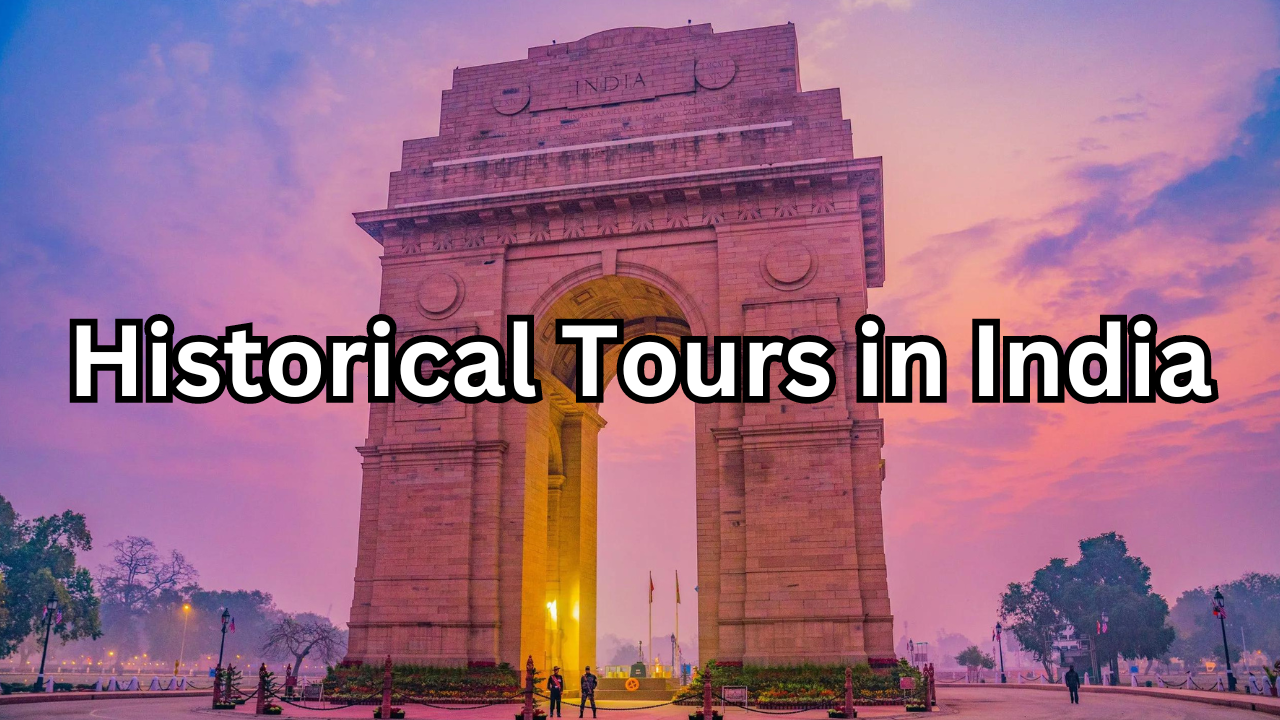Table of Contents
Introduction
Historical tours in India offer a captivating journey through time, unraveling the tapestry of the country’s rich cultural and architectural heritage. From ancient civilizations to medieval empires and colonial legacies, India’s historical sites provide a glimpse into its vibrant past. These tours are not just about visiting monuments; they are immersive experiences that bring history alive, allowing travelers to connect with the stories, art, and architecture that have shaped India’s identity over millennia.
India’s historical tours encompass a vast array of themes and regions, each offering unique insights and experiences. Whether exploring the grandeur of Mughal architecture in Delhi and Agra, tracing the spice trade routes in Kerala, or marveling at the rock-cut caves of Maharashtra, every tour unveils layers of history, tradition, and cultural diversity.
Throughout these tours, travelers encounter UNESCO World Heritage sites, ancient temples, majestic forts, intricate palaces, and vibrant heritage cities. They walk in the footsteps of emperors, saints, traders, and artisans, gaining a deeper understanding of India’s historical narratives, societal evolution, and artistic brilliance.
Beyond monuments and artifacts, historical tours in India also delve into intangible heritage, such as traditional arts, music, dance, and culinary traditions. They offer opportunities to interact with local communities, witness age-old rituals and festivals, and savor authentic regional cuisines, enriching the overall cultural experience.
Whether you are a history enthusiast, an art aficionado, or simply a curious traveler, embarking on a historical tours in India is a journey of discovery, enlightenment, and appreciation for the country’s enduring legacy. Each site visited becomes a chapter in a grand narrative, weaving together the threads of India’s past, present, and future.
Brief overview of India’s rich historical heritage
India’s rich historical heritage is a testament to its diverse cultural tapestry and millennia-old civilization. Stretching back thousands of years, India has been a cradle of ancient civilizations, a melting pot of cultures, and a witness to dynamic historical transformations.
- Ancient Civilizations: India is home to some of the world’s oldest civilizations, including the Harappan civilization in the Indus Valley, dating back to around 3300 BCE. The ruins of Harappa and Mohenjo-Daro stand as a testament to the advanced urban planning and engineering of that era.
- Indigenous Cultures: Across India, indigenous cultures and traditions have flourished for centuries, with each region boasting its unique customs, art forms, and languages. Tribal communities, such as the Santhals, Gonds, and Bhils, contribute to India’s rich cultural mosaic.
- Vedic Period: The Vedic period marked the emergence of Hinduism, with sacred texts like the Vedas and Upanishads shaping philosophical thought and religious practices. The concept of Dharma, Karma, and Moksha originated during this era.
- Maurya and Gupta Empires: India’s ancient empires, such as the Maurya and Gupta Empires, witnessed remarkable advancements in art, architecture, and governance. The Ashoka Pillars, Ajanta Caves, and Ellora Caves are architectural marvels from this period.
- Medieval Dynasties: The medieval period saw the rise of powerful dynasties like the Cholas, Chalukyas, and Rashtrakutas in the south, and the Delhi Sultanate and Mughal Empire in the north. These dynasties left a lasting impact on India’s cultural, religious, and architectural landscape.
- Colonial Era: The arrival of European powers, particularly the British, marked a significant chapter in India’s history. Colonial rule led to cultural exchanges, socio-economic changes, and eventually, the independence movement that shaped modern India.
- Independence and Post-Independence: India’s struggle for independence under leaders like Mahatma Gandhi culminated in 1947 with the country gaining independence from British rule. The post-independence era has been marked by socio-political reforms, economic growth, and cultural revival.
India’s historical heritage is reflected in its UNESCO World Heritage sites, ancient monuments, religious pilgrimages, traditional arts, literature, and culinary traditions. The country’s ability to preserve its heritage while embracing modernity makes it a captivating destination for history enthusiasts, scholars, and travelers seeking to explore the depths of a civilization steeped in history and tradition.
Importance of historical tourism in India
Historical tourism plays a pivotal role in India’s cultural, economic, and social fabric, contributing significantly to the country’s identity and global appeal. Here are key points highlighting the importance of historical tourism in India:
- Preservation of Heritage: Historical tourism fosters the preservation and conservation of India’s rich cultural heritage. Monuments, archaeological sites, and heritage cities are maintained and restored, ensuring their longevity for future generations.
- Cultural Exchange and Understanding: Historical tourism facilitates cultural exchange and understanding between people of different backgrounds. It promotes tolerance, respect for diversity, and fosters mutual appreciation of traditions, art, and customs.
- Economic Growth and Job Creation: Historical tourism is a major driver of economic growth, generating revenue through tourist expenditures on accommodations, transportation, dining, shopping, and tour services. It also creates employment opportunities in hospitality, tourism management, guiding, and related sectors.
- Promotion of Local Communities: Historical tourism benefits local communities by providing livelihoods, promoting handicrafts, traditional arts, and cultural performances. It encourages sustainable development, community engagement, and empowerment of marginalized groups.
- Educational and Research Opportunities: Historical tourism serves as a platform for education, offering insights into history, architecture, archaeology, and heritage preservation. It supports research initiatives, academic collaborations, and the documentation of historical narratives.
- Boost to Infrastructure and Services: The influx of tourists to historical sites drives investments in infrastructure development, transportation networks, hospitality facilities, and tourist amenities. This enhances overall connectivity and accessibility, benefiting both tourists and local residents.
- Promotion of Soft Power: India’s historical treasures, such as UNESCO World Heritage sites, iconic monuments, and cultural landmarks, contribute to its soft power on the global stage. They attract international visitors, foster cultural diplomacy, and promote India’s image as a vibrant and culturally rich destination.
- Revitalization of Heritage Cities: Historical tourism revitalizes heritage cities and towns, spurring urban regeneration, heritage walks, conservation projects, and cultural events. It rejuvenates historic quarters, markets, and neighborhoods, preserving their character and charm.
- Sustainable Tourism Practices: Historical tourism encourages sustainable tourism practices, including heritage conservation, eco-friendly initiatives, community-based tourism, and responsible travel. It promotes awareness about environmental stewardship and cultural sensitivity.
- Promotion of National Identity: Historical tourism plays a crucial role in shaping and promoting India’s national identity, highlighting its ancient civilizations, architectural wonders, artistic legacies, and diverse cultural heritage. It instills pride and appreciation for India’s rich historical legacy among its citizens and visitors alike.
Overall, historical tourism in India serves as a bridge between the past and present, celebrating the country’s heritage, fostering socio-economic development, and enriching the travel experience for millions of visitors each year.
Golden Triangle Tour
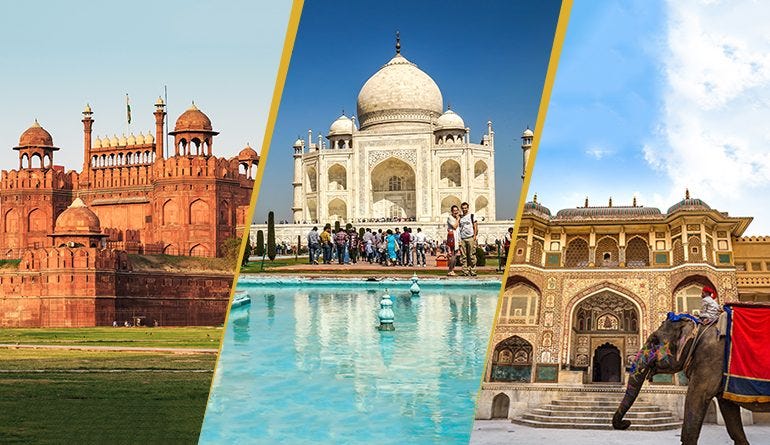
The Golden Triangle Tour is one of India’s most iconic and popular tourist circuits, encompassing the historical cities of Delhi, Agra, and Jaipur. This tour offers a fascinating glimpse into India’s rich history, culture, and architectural marvels, making it a must-visit for travelers seeking a comprehensive experience of the country’s heritage.
The Golden Triangle Tour offers a perfect blend of history, architecture, culture, and shopping, making it an ideal introduction to India’s diverse heritage. Travelers not only witness the grandeur of ancient monuments but also immerse themselves in the colorful tapestry of India’s traditions, cuisine, and hospitality. Whether exploring the narrow lanes of Old Delhi, marveling at the Taj Mahal’s ethereal beauty, or experiencing the royal heritage of Jaipur, this tour promises an unforgettable journey through India’s golden past and vibrant present.
Delhi, Agra, and Jaipur collectively form the Golden Triangle, a treasure trove of historical and architectural wonders in India. Here’s a closer look at the key attractions in each city:
Delhi:
- Red Fort: A UNESCO World Heritage site, the Red Fort is an imposing Mughal fortress that served as the main residence of emperors for centuries. Its red sandstone walls, intricate marble palaces, and beautiful gardens offer a glimpse into India’s royal past.
- Qutub Minar: Another UNESCO site, the Qutub Minar is a towering minaret built in the 12th century. It stands as a symbol of Delhi’s rich history, adorned with intricate carvings and inscriptions in Arabic script.
- India Gate: A prominent landmark in New Delhi, the India Gate is a war memorial honoring Indian soldiers who sacrificed their lives during World War I. Surrounded by lush lawns, it’s a popular spot for picnics and evening strolls.
Agra:
- Taj Mahal: Arguably India’s most famous monument, the Taj Mahal is a UNESCO masterpiece and one of the New Seven Wonders of the World. Built by Emperor Shah Jahan in memory of his wife Mumtaz Mahal, its white marble facade, intricate inlay work, and serene gardens create an unforgettable sight.
- Agra Fort: A UNESCO fortress and palace complex, the Agra Fort offers stunning views of the Taj Mahal from its ramparts. It features palaces, mosques, and audience halls that showcase Mughal architecture at its finest.
Jaipur:
- Amer Fort: Perched atop a hill overlooking Maota Lake, the Amer Fort is a magnificent blend of Rajput and Mughal architecture. Its intricate mirror work, stunning courtyards, and panoramic views make it a must-visit in Jaipur.
- City Palace: The City Palace in Jaipur is a royal complex that houses museums, courtyards, and palaces. Visitors can admire its ornate gateways, vibrant murals, and the impressive Peacock Gate.
- Hawa Mahal: Known as the Palace of Winds, Hawa Mahal is an iconic Jaipur landmark with its distinctive honeycomb facade. It was built for the royal women to observe street festivities while remaining unseen from the outside.
These historical sites in Delhi, Agra, and Jaipur not only showcase India’s architectural grandeur but also offer insights into its rich cultural heritage and royal legacy, making them essential stops on any journey through the Golden Triangle.
Rajasthan Heritage Tour
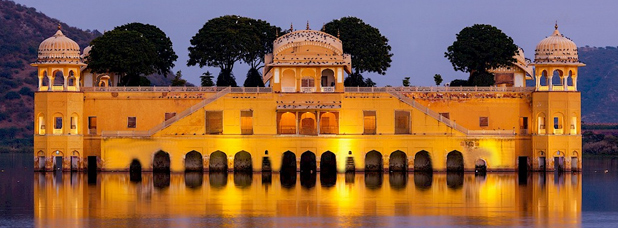
The Rajasthan Heritage Tour is a captivating journey through India’s royal past, showcasing the grandeur of the princely state of Rajasthan. This tour takes travelers on a mesmerizing exploration of majestic forts, opulent palaces, vibrant bazaars, and rich cultural traditions. One of the highlights of this tour is Jaipur, the Pink City, known for its iconic landmarks such as the Amer Fort, City Palace, and Hawa Mahal. The intricate architecture, royal splendor, and historical significance of these sites offer a glimpse into Rajasthan’s royal legacy and architectural brilliance.
Beyond Jaipur, the Rajasthan Heritage Tour delves deeper into the state’s cultural tapestry, with visits to Jodhpur’s Mehrangarh Fort, Udaipur’s City Palace overlooking Lake Pichola, and the historic havelis of Shekhawati. Each destination tells a unique story of valor, romance, and cultural richness, immersing travelers in the opulent world of Rajputana heritage. From desert landscapes to bustling markets, traditional folk performances, and delectable Rajasthani cuisine, this tour is a sensory delight that encapsulates the essence of Rajasthan’s timeless charm.
Jodhpur:
Jodhpur, known as the “Blue City,” is a captivating stop on the Rajasthan Heritage Tour. The towering Mehrangarh Fort, perched majestically atop a rocky hill, offers panoramic views of the city and showcases Rajput architecture at its finest. Visitors are mesmerized by its intricately carved gates, sprawling courtyards, and well-preserved palaces housing exquisite artifacts. Nearby, the serene Jaswant Thada, a white marble cenotaph built in memory of Maharaja Jaswant Singh II, provides a peaceful retreat with its intricate marble lattice work and tranquil gardens.
Udaipur:
The enchanting city of Udaipur, set amidst lakes and hills, is a jewel in Rajasthan’s crown. The Udaipur leg of the tour includes a visit to the majestic City Palace, a sprawling complex of palaces, courtyards, and gardens overlooking Lake Pichola. The shimmering waters of Lake Pichola offer a scenic backdrop for boat rides to Jag Mandir, a stunning island palace known for its marble architecture and historical significance. Udaipur’s romantic ambiance, adorned with palaces, temples, and colorful markets, leaves an indelible impression on visitors.
Jaipur:
In Jaipur, the Pink City, travelers are transported back in time to the era of Rajput kings and maharajas. The Amber Fort, a UNESCO World Heritage site, stands as a magnificent example of Rajput military architecture, with its imposing walls, intricate carvings, and sweeping views of the surrounding hills. The City Palace, a blend of Rajasthani and Mughal styles, showcases royal collections and opulent palaces within its complex. Nearby, the Jantar Mantar, an astronomical observatory built by Maharaja Sawai Jai Singh II, displays ancient astronomical instruments, reflecting Jaipur’s scientific and cultural heritage.
Each destination on the Rajasthan Heritage Tour, from the regal forts of Jodhpur to the romantic lakes of Udaipur and the historic landmarks of Jaipur, offers a unique perspective on Rajasthan’s rich history, architectural splendor, and cultural vibrancy, making it an unforgettable journey through India’s royal past.
Varanasi Spiritual Tour
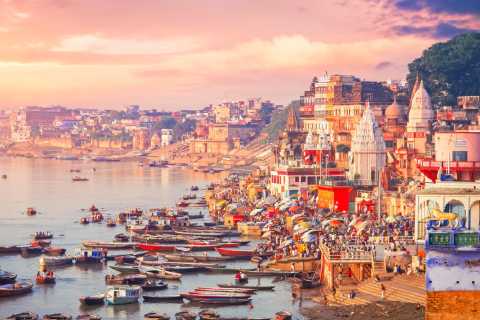
The Varanasi Spiritual Tour is a deeply immersive and transformative experience, drawing travelers into the heart of India’s spiritual heritage. Varanasi, one of the world’s oldest continuously inhabited cities, is revered as the spiritual capital of India. The tour begins with a visit to the sacred ghats along the banks of the Ganges River, where ancient rituals and ceremonies unfold daily. Witnessing the Ganga Aarti, a mesmerizing evening prayer ceremony with lamps, incense, and chants, is a highlight that epitomizes the spiritual essence of Varanasi.
Exploring Varanasi’s ancient temples is another integral part of the spiritual tour. The Kashi Vishwanath Temple, dedicated to Lord Shiva, is a major pilgrimage site where devotees offer prayers and seek blessings. The Sarnath, located near Varanasi, is a significant Buddhist site where Lord Buddha delivered his first sermon, known as the Dharmachakra Parivartan. The Dhamek Stupa and Mulagandha Kuti Vihar in Sarnath are sacred monuments that attract Buddhist pilgrims from around the world.
Apart from religious sites, the Varanasi Spiritual Tour delves into the city’s vibrant culture, music, and spirituality. Exploring the narrow lanes and bustling markets, tasting local delicacies, and interacting with sadhus (holy men) and scholars provide a deeper understanding of Varanasi’s spiritual ecosystem. The tour also includes opportunities for meditation, yoga sessions, and spiritual discourses, allowing travelers to connect with their inner selves and embark on a profound spiritual journey.
Overall, the Varanasi Spiritual Tour offers a soul-stirring experience, blending ancient traditions, sacred rituals, and spiritual insights in the sacred embrace of Varanasi, making it a pilgrimage of the heart and mind for seekers of spiritual enlightenment and cultural enrichment.
Spiritual Significance of Varanasi:
Varanasi holds immense spiritual significance in Hinduism, Buddhism, and Jainism, making it a revered destination for seekers and pilgrims worldwide. Known as Kashi, the city is believed to be one of the oldest living cities in the world and is considered the abode of Lord Shiva. Hindus believe that dying in Varanasi and being cremated on the ghats along the Ganges River can lead to moksha, liberation from the cycle of birth and death. The city’s spiritual aura is palpable, with countless temples, ashrams, and shrines dotting its sacred landscape.
Ghats along the Ganges River:
Varanasi’s ghats, or steps leading to the river, are central to its spiritual identity. These ghats serve various purposes, from bathing rituals (snan) to offering prayers (puja) and performing cremation ceremonies (antyesti). Each ghat has its significance and legends associated with it. Dashashwamedh Ghat is renowned for its Ganga Aarti, Manikarnika Ghat is the primary cremation ghat, and Assi Ghat is a popular spot for meditation and yoga practices. The ghats are bustling with life, color, and spirituality, providing a unique glimpse into the cultural and religious fabric of Varanasi.
Kashi Vishwanath Temple, Sarnath:
The Kashi Vishwanath Temple, dedicated to Lord Shiva as Vishwanath, is one of the holiest shrines in Varanasi. Devotees flock to this temple to seek blessings, offer prayers, and witness the divine energy believed to reside within its sanctum sanctorum. The temple’s history dates back centuries, and its significance in Hindu mythology and religious practices is profound. Sarnath, located near Varanasi, holds immense importance in Buddhism as the place where Lord Buddha delivered his first sermon after attaining enlightenment. The Dhamek Stupa and Mulagandha Kuti Vihar in Sarnath are revered sites for Buddhists worldwide, symbolizing the spread of Buddha’s teachings and the essence of spiritual awakening.
These spiritual landmarks in Varanasi, including its ghats along the Ganges River, Kashi Vishwanath Temple, and Sarnath, embody the city’s deep-rooted spirituality, cultural heritage, and timeless devotion, making Varanasi a sacred haven and a spiritual pilgrimage of profound significance.
Mughal Architecture Tour
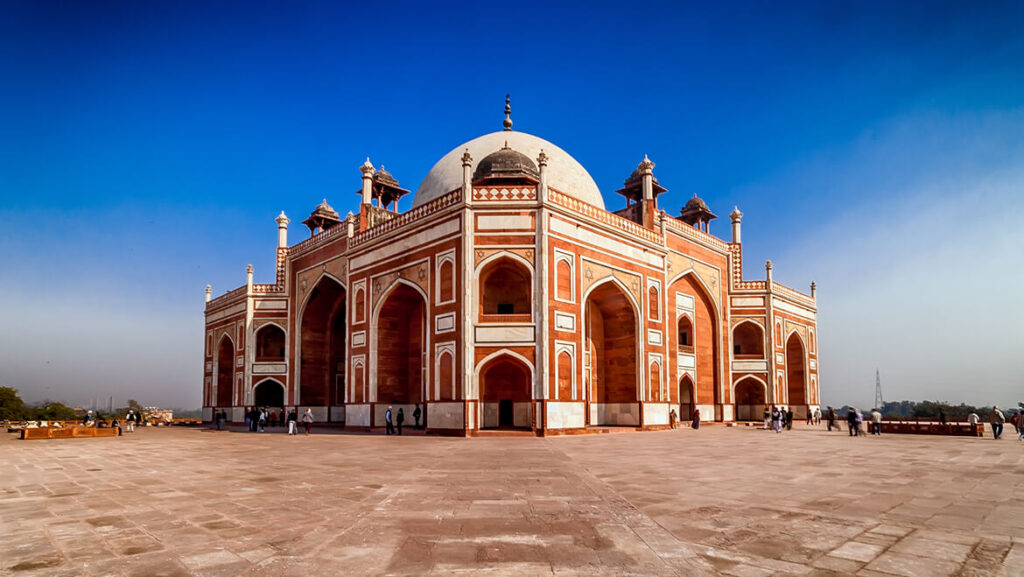
Embarking on a Mughal Architecture Tour in India unveils a mesmerizing journey through the grandeur and splendor of the Mughal Empire’s architectural legacy. The Mughals, known for their exquisite craftsmanship and artistic prowess, left an indelible mark on India’s architectural landscape, blending Persian, Islamic, and Indian styles to create monumental structures that stand as testaments to their imperial glory.
One of the key highlights of the Mughal Architecture Tour is a visit to the iconic Taj Mahal in Agra, a UNESCO World Heritage site and a masterpiece of Mughal architecture. Built by Emperor Shah Jahan in memory of his beloved wife Mumtaz Mahal, the Taj Mahal’s white marble facade, intricate inlay work, and symmetrical gardens epitomize the pinnacle of Mughal artistic achievement.
Another essential stop on the tour is the Red Fort in Delhi, a UNESCO site that served as the main residence of Mughal emperors for centuries. Its impressive red sandstone walls, majestic halls, and ornate pavilions, such as the Diwan-i-Khas and Diwan-i-Am, showcase the opulence and architectural finesse of the Mughal era.
The Mughal Architecture Tour also includes exploring Agra Fort, a formidable fortress and palace complex with a rich history and stunning views of the Taj Mahal. Visitors marvel at its intricate carvings, marble mosques, and royal chambers, gaining insights into the Mughal rulers’ lifestyle and governance.
In addition to Agra and Delhi, the tour may extend to Fatehpur Sikri, a UNESCO site near Agra known for its well-preserved Mughal architecture, including the Buland Darwaza, Jama Masjid, and Panch Mahal. These structures reflect the Mughal Empire’s cultural synthesis, blending Persian, Indian, and Central Asia influences in a harmonious architectural ensemble.
The Mughal Architecture Tour is a captivating exploration of India’s rich heritage, offering a glimpse into the golden age of Mughal art and architecture. From grand mausoleums like the Taj Mahal to majestic forts and palaces, this tour is a tribute to the enduring legacy of Mughal craftsmanship and aesthetic refinement that continues to inspire awe and admiration centuries later.
The Mughal Architecture Tour is incomplete without exploring the exquisite structures in Fatehpur Sikri, Agra, and Delhi, which epitomize the grandeur and elegance of Mughal design and craftsmanship.
Fatehpur Sikri:
- Buland Darwaza: This monumental gateway, also known as the “Gate of Magnificence,” is a symbol of Mughal architectural splendor. Standing at a towering height, the Buland Darwaza is intricately adorned with intricate carvings and inscriptions, showcasing the Mughals’ mastery in blending Persian and Indian architectural styles.
- Jama Masjid: The Jama Masjid in Fatehpur Sikri is a striking mosque known for its massive courtyard, intricately designed prayer hall, and elegant domes. Its red sandstone facade and marble inlay work add to its visual appeal, making it a significant religious and architectural landmark.
Agra:
- Agra Fort: A UNESCO World Heritage site, the Agra Fort is a majestic fortress-palace complex that served as the main residence of the Mughal emperors. Its red sandstone walls enclose palaces, audience halls, and courtyards adorned with exquisite marble work, reflecting the opulence and strategic brilliance of Mughal architecture.
- Itmad-ud-Daulah’s Tomb: Often referred to as the “Baby Taj” due to its resemblance to the Taj Mahal, Itmad-ud-Daulah’s Tomb is a gem of Mughal architecture. This mausoleum, built for Nur Jahan’s father, features intricate marble lattice work, floral motifs, and Persian-inspired designs, showcasing the finesse of Mughal craftsmanship.
Delhi:
- Humayun’s Tomb: A UNESCO World Heritage site, Humayun’s Tomb is a stunning example of Mughal architecture with its symmetrical layout, Persian-style gardens, and intricate red sandstone and marble craftsmanship. This tomb served as an architectural precursor to the Taj Mahal and holds historical and cultural significance.
- Red Fort: The Red Fort in Delhi is an iconic symbol of Mughal power and grandeur. Its massive red sandstone walls, impressive gates, and ornate structures such as the Diwan-i-Khas and Diwan-i-Am showcase the Mughal Empire’s architectural prowess and administrative acumen.
Exploring these landmarks in Fatehpur Sikri, Agra, and Delhi on the Mughal Architecture Tour provides a comprehensive understanding of Mughal aesthetics, innovation, and cultural patronage, offering a journey through the golden age of Mughal art and architecture.
South India Historical Tour
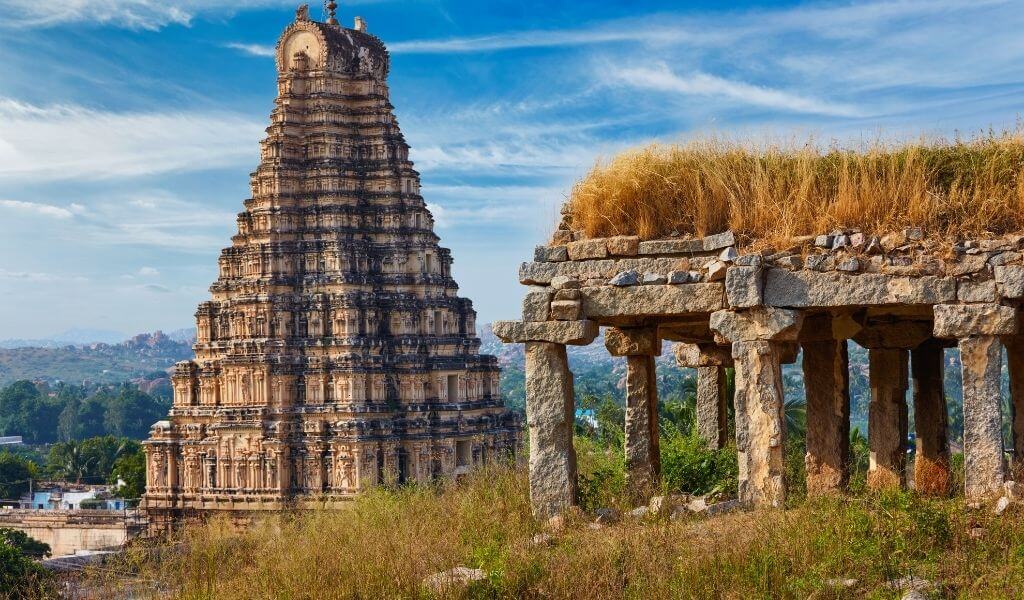
Embarking on a South India Historical Tour unveils a captivating journey through the rich cultural heritage and ancient civilizations that have flourished in this region for centuries. South India, renowned for its Dravidian architecture, vibrant traditions, and diverse landscapes, offers a treasure trove of historical wonders waiting to be explored.
One of the highlights of the South India Historical Tour is a visit to the UNESCO-listed monuments of Mahabalipuram, where ancient rock-cut temples, intricate sculptures, and majestic rathas (chariot-shaped temples) stand as testaments to the artistic brilliance of the Pallava dynasty. Travelers also delve into the architectural marvels of Thanjavur, home to the iconic Brihadeeswarar Temple, a masterpiece of Dravidian architecture adorned with exquisite carvings and towering gopurams (gateway towers). The tour extends to Madurai, known as the “Athens of the East,” where the Meenakshi Amman Temple, with its ornate sculptures and vibrant corridors, reflects the cultural and religious fervor of Tamil Nadu.
Beyond temples and monuments, the South India Historical Tour encompasses the cultural heritage of Kerala, with visits to historic ports like Cochin, ancient temples, and the tranquil backwaters lined with traditional villages and coconut groves. From the Hoysala temples of Karnataka to the Chola temples of Tamil Nadu, each stop on this tour offers insights into South India’s rich history, architectural splendor, and cultural diversity, making it a fascinating exploration for history enthusiasts and cultural connoisseurs alike.
The South India Historical Tour takes travelers on a mesmerizing journey through the architectural marvels and cultural heritage of Mahabalipuram, Thanjavur, and Madurai, showcasing the rich history and artistic brilliance of the region.
Mahabalipuram:
The tour begins with a visit to Mahabalipuram, where the Shore Temple stands as a breathtaking symbol of Pallava architecture. This UNESCO World Heritage site, overlooking the Bay of Bengal, features intricately carved reliefs depicting scenes from Hindu mythology. Nearby, the Pancha Rathas, or Five Rathas, are monolithic rock-cut temples resembling chariots, each dedicated to different deities and showcasing exquisite craftsmanship.
Thanjavur:
Thanjavur, known for its cultural heritage, is home to the iconic Brihadeeswarar Temple, a UNESCO site and a masterpiece of Dravidian architecture. The temple’s towering vimana (tower) and intricately carved sculptures, including the massive Nandi statue, are awe-inspiring. The tour also includes a visit to the Thanjavur Palace, once the seat of the Chola dynasty, with its grand halls, courtyards, and art collections that offer insights into the region’s royal past.
Madurai:
In Madurai, travelers explore the magnificent Meenakshi Amman Temple, dedicated to Goddess Meenakshi and Lord Sundareswarar. This sprawling temple complex is renowned for its towering gopurams (gateway towers), intricately sculpted pillars, and vibrant corridors adorned with mythological figures. The tour also includes a visit to the Thirumalai Nayakkar Palace, a 17th-century marvel known for its Indo-Saracenic architecture, grand halls, and exquisite stucco work depicting scenes from epic tales.
Each destination on the South India Historical Tour, from the ancient temples of Mahabalipuram and Thanjavur to the grandeur of Madurai’s religious and royal landmarks, offers a glimpse into the region’s rich cultural heritage, artistic legacy, and spiritual significance, making it a memorable journey through South India’s historical treasures.
Kolkata Heritage Walk
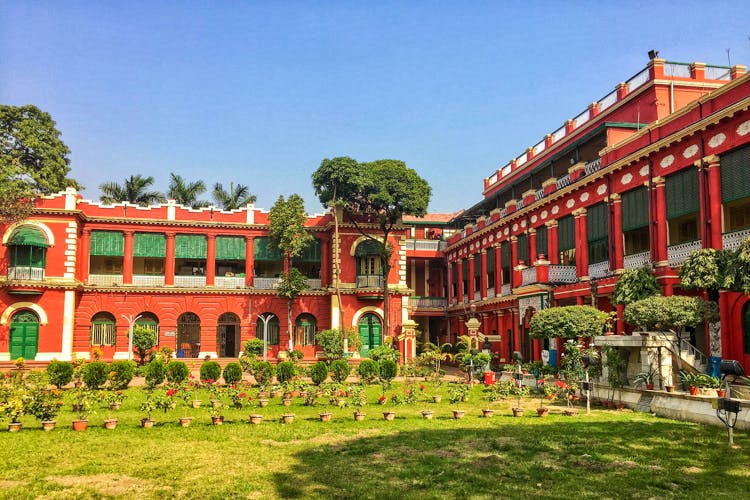
The Kolkata Heritage Walk offers a captivating journey through the rich cultural tapestry and colonial legacy of the “City of Joy.” Kolkata, formerly known as Calcutta, is a city steeped in history, arts, and intellectual fervor, making it a treasure trove for heritage enthusiasts and history buffs.
The heritage walk typically begins at the iconic Victoria Memorial, a grand marble monument built during the British Raj in memory of Queen Victoria. Surrounded by lush gardens, this architectural marvel houses a museum showcasing colonial-era artifacts, paintings, and exhibits that depict Kolkata’s historical evolution.
From there, the walk leads to St. Paul’s Cathedral, an imposing Gothic-style church known for its striking spires and stained glass windows. Built in the 19th century, the cathedral is a testament to Kolkata’s rich architectural heritage and religious diversity.
As the heritage walk continues, participants explore the bustling lanes of Kolkata’s colonial-era neighborhoods, such as Park Street and Dalhousie Square (now known as B.B.D. Bagh), where historic buildings, colonial-era mansions, and government offices stand as reminders of the city’s British colonial past.
Marble Palace, a magnificent mansion adorned with sculptures, paintings, and artifacts, offers a glimpse into Kolkata’s aristocratic heritage. Nearby, the Howrah Bridge, an iconic cantilever bridge spanning the Hooghly River, is a symbol of Kolkata’s industrial and engineering prowess.
The Indian Museum, founded in 1814, is another stop on the heritage walk, showcasing a vast collection of archaeological treasures, natural history exhibits, and cultural artifacts, providing insights into India’s diverse heritage.
The heritage walk also includes visits to the Marble Palace, a magnificent mansion adorned with sculptures, paintings, and artifacts, offering a glimpse into Kolkata’s aristocratic heritage. The walk concludes with a visit to the Mother House, the headquarters of the Missionaries of Charity founded by Mother Teresa, where visitors can pay homage to her legacy of compassion and service.
Overall, the Kolkata Heritage Walk is a journey through time, exploring Kolkata’s architectural landmarks, cultural institutions, and historical sites that reflect its rich and multifaceted heritage, making it a memorable experience for visitors interested in the city’s past and present.
Colonial heritage sites: Victoria Memorial, St. Paul’s Cathedral
Kolkata’s colonial heritage is beautifully preserved in iconic landmarks like the Victoria Memorial and St. Paul’s Cathedral, which stand as testament to the city’s rich history and architectural grandeur.
Victoria Memorial: Built between 1906 and 1921, the Victoria Memorial is a stunning tribute to Queen Victoria and the grandeur of the British Raj. This majestic marble edifice, surrounded by lush gardens, combines Indo-Saracenic and British architectural styles, featuring a central dome, ornate carvings, and exquisite sculptures. The memorial houses a museum showcasing paintings, sculptures, artifacts, and historical exhibits that offer insights into Kolkata’s colonial past and cultural heritage.
St. Paul’s Cathedral: A masterpiece of Gothic Revival architecture, St. Paul’s Cathedral is one of Kolkata’s most prominent colonial-era churches. Completed in 1847, the cathedral’s soaring spires, elegant arches, and intricate stained glass windows create a mesmerizing sight. The interior is adorned with memorial plaques, marble sculptures, and a majestic organ, reflecting the church’s historical and spiritual significance.
These colonial heritage sites in Kolkata, including the Victoria Memorial and St. Paul’s Cathedral, are not just architectural marvels but also serve as reminders of the city’s rich cultural legacy and the enduring influence of its colonial past. They attract visitors from around the world, offering a glimpse into Kolkata’s historical narratives and artistic heritage.
Howrah Bridge, Marble Palace
Howrah Bridge: The Howrah Bridge, an iconic symbol of Kolkata’s industrial prowess and architectural ingenuity, spans the Hooghly River, connecting the bustling city with its bustling counterpart, Howrah. Completed in 1943, this cantilever bridge is a marvel of engineering, with no nuts or bolts used in its construction. Its massive steel structure, illuminated by night, is a sight to behold, symbolizing Kolkata’s resilience and connectivity. The Howrah Bridge is not just a means of transportation but also a cultural landmark, bustling with activity as pedestrians, vehicles, and trams traverse its length, offering panoramic views of the river and the city’s skyline.
Marble Palace: The Marble Palace, nestled amidst lush gardens in North Kolkata, is a hidden gem showcasing the city’s aristocratic heritage and artistic splendor. Built in the 19th century by a wealthy Bengali merchant, the mansion is adorned with exquisite marble sculptures, Italian marble floors, and ornate chandeliers. Its art collection includes paintings by renowned artists like Rubens, Reynolds, and Titian, alongside antique furniture, mirrors, and rare artifacts. The Marble Palace is a testimony to Kolkata’s cultural patronage, with its opulent interiors and curated galleries offering a glimpse into the city’s affluent past and artistic legacy.
Indian Museum, Mother House (Missionaries of Charity)
The Indian Museum in Kolkata stands as a beacon of India’s cultural and historical heritage, offering a fascinating journey through its vast collection of artifacts, artworks, and archaeological treasures. Founded in 1814, it is one of the oldest and largest museums in India, housing a diverse range of exhibits that span various disciplines such as anthropology, archaeology, art, and natural history. Visitors to the Indian Museum can explore ancient sculptures, paintings, manuscripts, coins, and textiles, providing insights into India’s rich cultural tapestry and historical evolution. The museum’s galleries and displays offer a comprehensive overview of India’s diverse heritage, making it a must-visit destination for history enthusiasts, scholars, and curious minds alike.
The Mother House, headquarters of the Missionaries of Charity founded by Mother Teresa, holds a special place in Kolkata’s cultural and spiritual landscape. This humble yet significant institution embodies the spirit of compassion, service, and selflessness championed by Mother Teresa, who dedicated her life to serving the poor and marginalized. Visitors to the Mother House can pay homage to Mother Teresa’s legacy, learn about the Missionaries of Charity’s humanitarian work, and participate in prayer services and charitable activities. The serene ambiance and ethos of love and kindness at the Mother House leave a lasting impact on visitors, inspiring them to embrace the values of empathy, compassion, and social responsibility.
Ajanta and Ellora Caves Exploration
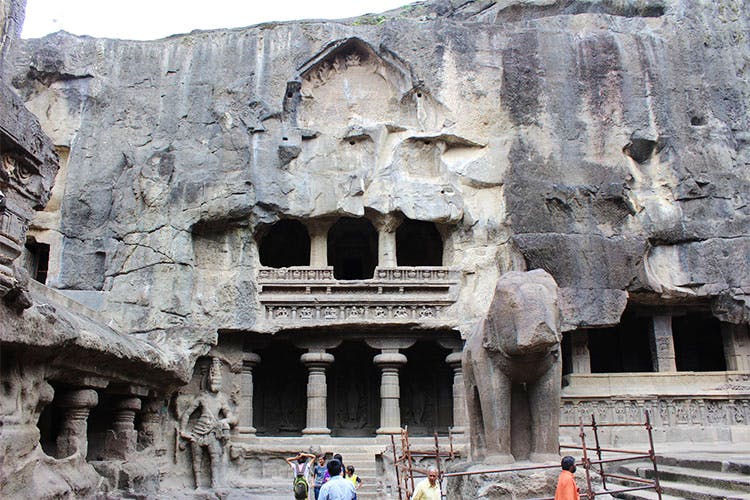
Exploring the Ajanta and Ellora Caves in Maharashtra is a captivating journey into India’s ancient art, architecture, and spiritual heritage. These UNESCO World Heritage sites, located near Aurangabad, showcase exquisite rock-cut cave temples, monasteries, and artworks dating back to the 2nd century BCE to the 10th century CE, spanning Buddhist, Hindu, and Jain traditions.
The Ajanta Caves, nestled in a horseshoe-shaped gorge along the Waghora River, comprise 29 caves renowned for their stunning frescoes, sculptures, and architectural marvels. These caves, primarily Buddhist, depict scenes from the life of Buddha, Bodhisattvas, and ancient Indian legends. The intricate carvings, vibrant murals, and serene ambiance of Ajanta create an immersive experience, offering insights into ancient Indian artistry and religious practices.
On the other hand, the Ellora Caves are a marvel of rock-cut architecture, housing a complex of 34 caves representing Buddhist, Hindu, and Jain faiths. The Kailasa Temple, a highlight of Ellora, is the largest monolithic structure in the world, carved entirely from a single rock. The intricate detailing, sculptural reliefs, and majestic architecture of Ellora’s caves, including the exquisite Jain caves, reflect the artistic and spiritual richness of ancient India.
Exploring Ajanta and Ellora is like stepping into a time capsule, where each cave tells a story of devotion, craftsmanship, and cultural synthesis. The spiritual ambiance, artistic excellence, and historical significance of these caves make them a treasure trove for archaeologists, historians, and travelers seeking to unravel the mysteries of India’s ancient past and architectural wonders.
Ajanta Caves: Paintings, sculptures
The Ajanta Caves in Maharashtra are renowned for their exquisite paintings and sculptures, making them a treasure trove of ancient Indian art and craftsmanship.
Paintings: The Ajanta Caves are famous for their vibrant and detailed frescoes, depicting scenes from the life of Buddha, Jataka tales, celestial beings, and everyday life in ancient India. These paintings, executed in a blend of mineral pigments and vegetable dyes, showcase remarkable skill in color blending, perspective, and narrative storytelling. The use of vivid colors, intricate detailing, and emotive expressions in the Ajanta paintings reflects the artistic prowess and spiritual devotion of the artisans who created them. Visitors to the caves are mesmerized by the beauty and timeless appeal of these ancient murals, which have endured for centuries, preserving India’s artistic heritage.
Sculptures: Alongside the paintings, the Ajanta Caves are adorned with exquisite sculptures that exhibit mastery in stone carving and iconography. The sculptures depict various deities, Bodhisattvas, apsaras (celestial nymphs), and mythological figures, showcasing a blend of Buddhist and Hindu iconography. The intricate detailing, graceful poses, and serene expressions in the Ajanta sculptures highlight the sculptors’ ability to capture spiritual essence and beauty in stone. Each sculpture tells a story and adds to the immersive experience of exploring the caves, offering insights into ancient Indian beliefs, aesthetics, and craftsmanship.
Together, the paintings and sculptures in the Ajanta Caves create a captivating tapestry of artistry, spirituality, and cultural richness, making them a UNESCO World Heritage site of immense historical and artistic significance.
Ellora Caves: Kailasa Temple, Buddhist caves
The Ellora Caves in Maharashtra are renowned for their architectural grandeur and spiritual significance, featuring the majestic Kailasa Temple and a series of Buddhist caves that showcase India’s rich cultural heritage.
Kailasa Temple: The Kailasa Temple is the crown jewel of the Ellora Caves, a monumental structure carved entirely from a single rock, making it one of the largest monolithic structures in the world. Dedicated to Lord Shiva, the temple complex includes intricately carved pillars, sculptures, mandapas (halls), and a towering vimana (tower) resembling Mount Kailash, the abode of Lord Shiva. The detailing in the Kailasa Temple is astonishing, with depictions of deities, celestial beings, and mythological scenes adorning its walls and ceilings. The temple’s architectural brilliance and sheer scale leave visitors in awe of the ancient artisans’ skill and devotion.
Buddhist Caves: Alongside the Kailasa Temple, the Ellora Caves also house a series of Buddhist caves that date back to the 5th to 7th centuries CE. These caves, carved into the rock face, include viharas (monasteries) and chaityas (prayer halls) adorned with intricate sculptures, paintings, and stupas. The Buddhist caves at Ellora showcase a blend of Mahayana and Hinayana Buddhist traditions, with depictions of Buddha, Bodhisattvas, and scenes from Buddhist scriptures. The serene ambiance and spiritual aura of the Buddhist caves make them a serene retreat for meditation and contemplation.
Exploring the Ellora Caves, particularly the awe-inspiring Kailasa Temple and the tranquil Buddhist caves, offers a glimpse into India’s ancient architectural marvels, religious diversity, and artistic heritage. These caves, designated as a UNESCO World Heritage site, continue to inspire awe and reverence among visitors, reflecting the timeless legacy of India’s cultural and spiritual legacy.
Daulatabad Fort
The Daulatabad Fort, located near Aurangabad in Maharashtra, is a formidable hill fortress steeped in history and architectural splendor. Originally known as Devagiri Fort, it was renamed Daulatabad (“Abode of Wealth”) by Muhammad bin Tughlaq, the Sultan of Delhi, who made it his capital in the 14th century.
The fort’s strategic location atop a steep hill provided natural defenses, making it virtually impregnable. Its impressive features include massive ramparts, bastions, and a series of gates with intricate defensive mechanisms, such as the Andheri Gate, which is a dark and winding passage designed to confuse invaders.
One of the most fascinating aspects of Daulatabad Fort is its complex water management system, which included artificial tanks, cisterns, and an underground tunnel that connected the fort to a distant water source. This innovative system ensured a reliable water supply during times of siege, enhancing the fort’s defensive capabilities.
Inside the fort, visitors can explore a range of structures, including the Chand Minar, a towering victory tower built by Ala-ud-din Bahmani to commemorate his successful campaign against the Vijayanagara Empire. The Chini Mahal, or Palace of Mirrors, is another notable feature with its exquisite tile work and reflecting surfaces.
The Daulatabad Fort’s rich history includes periods of occupation by various dynasties, including the Yadavas, Delhi Sultanate, and Bahmani Sultanate, each leaving their mark on its architecture and cultural legacy. Today, the fort stands as a testament to India’s medieval military engineering and serves as a popular tourist destination, offering panoramic views of the surrounding landscape and a glimpse into the region’s storied past.
Gujarat Archaeological Tour
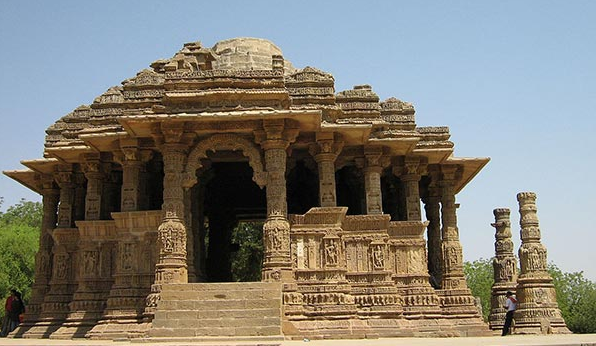
Embarking on a Gujarat Archaeological Tour unveils a captivating journey through millennia of history, ancient civilizations, and cultural heritage preserved in Gujarat’s archaeological sites. This western Indian state is a treasure trove of archaeological wonders, offering insights into the region’s rich past and diverse cultural influences.
The tour typically begins with a visit to the ancient city of Lothal, a Harappan-era archaeological site dating back over 4,000 years. Lothal, with its well-planned dockyard, warehouses, and urban layout, provides a glimpse into the advanced maritime and urban planning skills of the Harappan civilization.
Moving forward in time, the tour explores the remnants of the Mauryan Empire at the Ashoka Rock Edicts in Junagadh, where inscriptions by Emperor Ashoka provide valuable historical and philosophical insights. The nearby Uparkot Fort, with its ancient gateways, water tanks, and temples, offers a window into Gujarat’s medieval history.
The archaeological tour also delves into the ancient Buddhist caves of Junagadh, such as the Khapra Kodiya Caves and the Babupyana Caves, showcasing intricate rock-cut architecture and Buddhist art dating back to the 2nd century BCE.
In the historic city of Vadodara, the tour includes a visit to the Champaner-Pavagadh Archaeological Park, a UNESCO World Heritage site featuring a blend of Hindu and Islamic architecture, including mosques, temples, stepwells, and fortifications dating from the 8th to 14th centuries.
The tour may also encompass sites like Rani ki Vav in Patan, a UNESCO site known for its intricately carved stepwell, and the ancient port town of Dwarka, associated with Lord Krishna in Hindu mythology.
Overall, the Gujarat Archaeological Tour offers a fascinating glimpse into Gujarat’s rich archaeological heritage, spanning ancient civilizations, medieval empires, and cultural exchanges, making it a rewarding journey for history enthusiasts, archaeologists, and cultural explorers alike.
Lothal: Lothal, an archaeological site in Gujarat, holds remnants of the ancient Harappan civilization dating back over 4,000 years. The site boasts well-preserved Harappan ruins, including a dockyard that served as a hub for maritime trade. The sophisticated urban planning, advanced drainage systems, and the dockyard’s strategic location along the ancient river channels highlight the engineering prowess of the Harappan people. Exploring Lothal provides valuable insights into the economic, social, and technological advancements of one of the world’s earliest urban civilizations.
Rani Ki Vav Stepwell: Rani Ki Vav, located in Patan, is an intricately designed stepwell that epitomizes Gujarat’s architectural heritage. Built in the 11th century by Queen Udayamati in memory of her husband King Bhimdev I, this UNESCO World Heritage site features a series of elaborately carved levels, pillars, and sculptures depicting deities, celestial beings, and mythological scenes. The stepwell’s design, with its descending levels leading to a pristine water source, showcases the ingenuity of medieval Indian engineers and artists, making it a mesmerizing testament to Gujarat’s cultural and artistic legacy.
Champaner-Pavagadh Archaeological Park, Bhuj: The Champaner-Pavagadh Archaeological Park, near Bhuj, is a UNESCO World Heritage site that encompasses a range of historical and architectural marvels. The park features a blend of Hindu and Islamic architectural styles, including mosques, temples, fortifications, and stepwells, dating from the 8th to 14th centuries. Notable structures within the park include the Jama Masjid, Sahar ki Masjid, Kevda Masjid, and the intricately carved Nagina Masjid. Exploring this archaeological park offers a fascinating journey through Gujarat’s medieval history, religious diversity, and architectural splendor, providing a comprehensive glimpse into the region’s cultural heritage.
Kerala Spice Route Tour
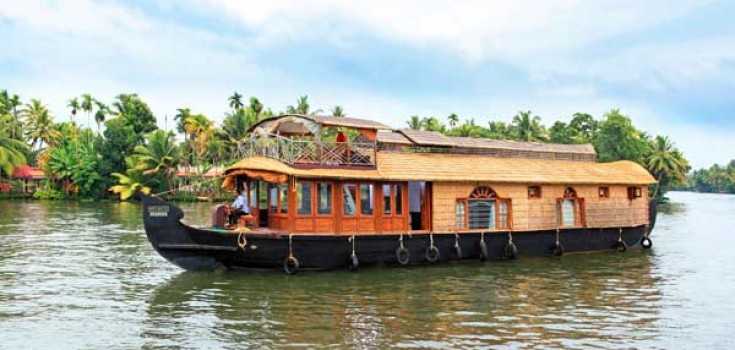
The Kerala Spice Route Tour is a sensory-rich journey that traces the historical Spice Route, a network of trade routes that connected Kerala with the rest of the world for centuries. Kerala, known as the “Spice Garden of India,” has a rich legacy of spice cultivation, trade, and cultural exchange dating back to ancient times.
The tour typically begins in Kochi, a historic port city that was a vital hub along the Spice Route. Visitors can explore Fort Kochi, where they can witness the remnants of colonial influence, including Portuguese, Dutch, and British architecture. The iconic Chinese fishing nets along the coastline and the vibrant spice markets offer a glimpse into Kochi’s maritime heritage and spice trade legacy.
From Kochi, the tour ventures into the lush spice plantations of Munnar, Thekkady, and Wayanad, where cardamom, pepper, cinnamon, cloves, and other aromatic spices thrive in the region’s fertile soil and favorable climate. Guided tours of spice estates provide insights into the cultivation, harvesting, and processing of spices, allowing visitors to experience the sights, smells, and flavors of Kerala’s spice bounty.
The journey continues to Alleppey, known for its serene backwaters and traditional houseboat cruises. Here, visitors can witness the intricate network of canals, lagoons, and rivers that once facilitated the transportation of spices and other goods along the ancient trade routes. A stay in a houseboat offers a unique perspective on Kerala’s water-based lifestyle and scenic beauty.
The Kerala Spice Route Tour also includes visits to historical sites such as the Mattancherry Palace, also known as the Dutch Palace, which houses exquisite murals depicting Kerala’s royal heritage and cultural traditions. The tour may also encompass a visit to a spice museum or a cooking demonstration where travelers can learn to prepare traditional Kerala dishes infused with aromatic spices.
Overall, the Kerala Spice Route Tour is a fascinating exploration of Kerala’s historical, cultural, and culinary heritage, offering travelers a holistic experience that combines history, nature, and gastronomy along the legendary Spice Route.
Fort Cochin: Dutch Palace, St. Francis Church
Fort Cochin, a historic district in Kochi, Kerala, is rich in colonial heritage and cultural landmarks. The Dutch Palace, also known as Mattancherry Palace, is a must-visit attraction showcasing Kerala’s traditional architecture and exquisite murals depicting Hindu mythology and the region’s royal history. Nearby, St. Francis Church, dating back to the 16th century, holds historical significance as the oldest European church in India, where explorer Vasco da Gama was originally buried before his remains were transferred to Portugal. Both sites offer a glimpse into Fort Cochin’s colonial past and cultural diversity.
Muziris Heritage Project:
The Muziris Heritage Project is a unique initiative that aims to revive and preserve the historical and cultural heritage of the ancient port of Muziris, once a bustling center of trade and cultural exchange on the Spice Route. The project includes archaeological sites, museums, heritage trails, and cultural events that showcase Muziris’ role in connecting civilizations and fostering trade between India and the world. Visitors can explore the ancient ruins, learn about the region’s maritime history, and engage in immersive experiences that bring the past to life.
Backwaters Cruise and Kathakali Performance:
A backwaters cruise in Kerala’s tranquil waterways, such as those in Alleppey or Kumarakom, offers a serene and picturesque experience amidst lush greenery, coconut palms, and traditional villages. Travelers can unwind aboard a houseboat and soak in the scenic beauty while enjoying delicious Kerala cuisine prepared with aromatic spices.
To add a cultural touch to the tour, a Kathakali performance is a must-see. Kathakali is a traditional dance-drama form that originated in Kerala, known for its elaborate costumes, expressive facial makeup, and storytelling through dance, music, and gestures. Witnessing a Kathakali performance allows visitors to immerse themselves in Kerala’s vibrant performing arts and folklore traditions.
Combining visits to Fort Cochin’s historical sites, exploration of the Muziris Heritage Project, a backwaters cruise, and a Kathakali performance creates a well-rounded Kerala experience that celebrates the region’s rich history, cultural diversity, natural beauty, and artistic heritage.
Hampi and Badami Expedition
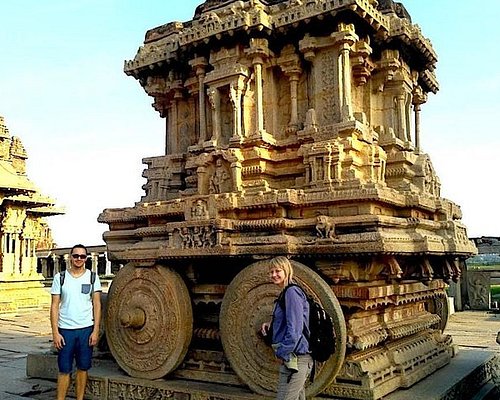
Embarking on a Hampi and Badami Expedition unveils a fascinating journey through Karnataka’s rich historical and architectural legacy, where ancient ruins, rock-cut temples, and stunning landscapes narrate tales of empires and cultural flourishes.
Hampi: Hampi, a UNESCO World Heritage site, is a sprawling archaeological complex that was once the capital of the Vijayanagara Empire. The ruins of Hampi, set against a dramatic boulder-strewn landscape, include majestic temples, palaces, markets, and intricately carved monuments. Key highlights of Hampi include the Virupaksha Temple, dedicated to Lord Shiva; the Vittala Temple, renowned for its iconic stone chariot and musical pillars; and the Hampi Bazaar, where remnants of a bustling marketplace transport visitors back in time. Exploring Hampi is like stepping into a living museum of medieval grandeur and artistic brilliance.
Badami: Badami, located in northern Karnataka, is famous for its rock-cut cave temples that date back to the 6th century. The Badami Cave Temples, carved out of sandstone cliffs, showcase exquisite sculptures, carvings, and frescoes depicting Hindu deities and mythological scenes. The four main caves, dedicated to Shiva, Vishnu, and Jain Tirthankaras, are architectural marvels that reflect the Chalukyan dynasty’s artistic and religious patronage. Apart from the cave temples, Badami also boasts a picturesque Agastya Lake and the Bhutanatha Temples, adding to its allure as a historical and cultural destination.
The Hampi and Badami Expedition combines exploration of ancient ruins, architectural wonders, and natural landscapes, offering a holistic immersion into Karnataka’s historical and artistic heritage. Travelers can witness the grandeur of Vijayanagara architecture in Hampi, marvel at the rock-cut masterpieces of Badami, and soak in the scenic beauty of Karnataka’s countryside, making it a memorable journey for history enthusiasts, archaeology buffs, and cultural travelers alike.
Conclusion of Historical Tours in India
In conclusion, historical tours in India offer a captivating journey through the rich tapestry of the country’s past, showcasing centuries of cultural, architectural, and artistic heritage. From the majestic forts and palaces of Rajasthan to the ancient caves of Ajanta and Ellora, from the serene backwaters of Kerala to the bustling streets of Delhi, each tour unveils unique facets of India’s history and civilization. Exploring historical sites like the Taj Mahal, Red Fort, Hampi, and Badami allows travelers to delve into the grandeur of bygone eras, marvel at intricate craftsmanship, and gain insights into the socio-cultural fabric that shaped India’s diverse heritage. These tours not only offer a glimpse into India’s glorious past but also foster cultural exchange, appreciation for architectural marvels, and a deeper understanding of the traditions and legacies that continue to influence contemporary India. Whether it’s tracing the Spice Route, discovering ancient civilizations, or immersing in colonial heritage, historical tours in India promise an enriching and unforgettable experience for all who embark on them.
Read more Historical Tours in Nepal
